So, you’ve been promoting your brand on social media. Dropping truth bombs on Twitter. Running photo contests on Facebook. Publishing how-to videos on LinkedIn. An overabundance of memes, or some other forms of social media content.
In other words, the works.
And what do you have to show in terms of leads and sales after all that work?
Zip. Nada. Zilch.
And it’s driving you nuts.
So, what’s going on?
If I would hazard a guess, your CTAs (or calls-to-action) are weak or non-existent.
If you want to drive meaningful and profitable results to your social media campaign, you need to create persuasive CTAs.
Need help on how to craft CTAs that compel prospects to take the next step towards becoming customers?
You’ve come to the right place.
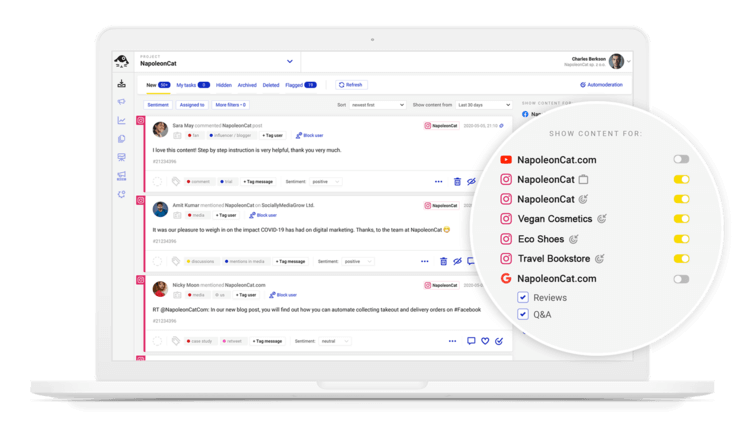
Simplify Social Media
Management with One Tool
- Manage & reply to comments and DMs in one place.
- Monitor ad comments from multiple accounts.
- Automate answers to repetitive questions.
- Schedule posts to multiple accounts, on desktop.
- Analyze performance and monitor hashtags.
- Keep track of your competition.
- Create or schedule in-depth reports in seconds.
What is a CTA?
So, what’s a CTA or call-to-action again?
A call to action is a prompt or directive to get visitors, leads, and customers to take your desired action.
That desired action could be many things, like downloading a whitepaper, visiting your website, signing up for a free trial, registering for a course, and more.
A CTA can take many forms:
- Button
- Hyperlink
- Plain text without a link (that asks a visitor to click on a link)
Typical CTAs include “Buy Now,’ ‘Order Now,’ or ‘Learn More.’ You can also create a longer one, such as ‘Join now and be a part of our growing community!’.
Why CTAs are important
So, why are CTAs a big deal?
Simple: Because they help you take your relationship with your audience to the next level. Put another way, they help guide your audience in their journey towards becoming a customer and eventually an advocate for your brand.
As a business owner or marketer, anything you publish on social media, or on the web in general, has a purpose. While it’s true that we publish content to build a relationship with prospects and customers, we also want our efforts to translate into revenue.
And you can’t possibly pull that off without telling your audience what to do.
You might be thinking: Shouldn’t the content itself be enough to clue them in?
Not really.
Why? Because in the noisy world of the Internet and social media, customers need direction more than ever. If you don’t give them a clear path towards being a customer, chances are they’re not going to take it.
With that said, you can’t just slap on a CTA telling them to “Click here” and expect prospects to do what you want them to do with no questions asked.
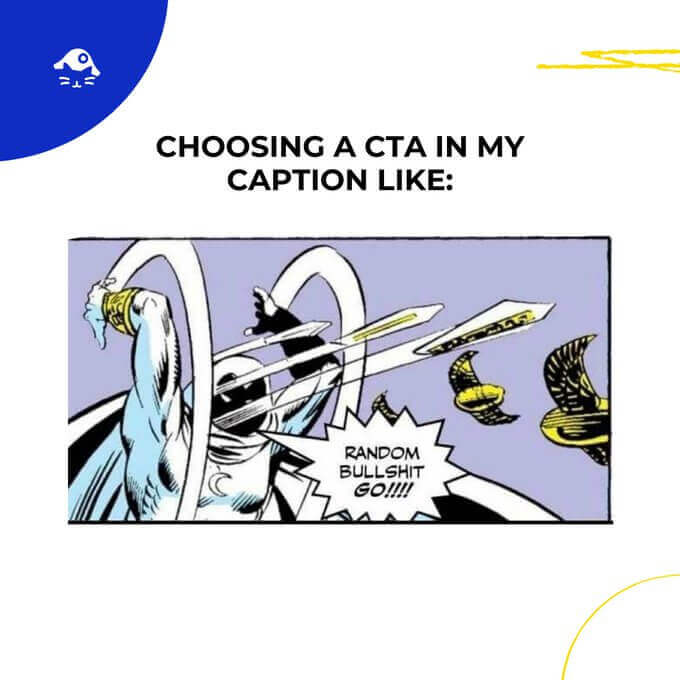
If you want them to take your desired action, your CTAs need to be persuasive.
Social media CTAs
Typically, you put your CTAs above the fold or below the fold, at least when crafting one for a website or a landing page.
But it can get tricky when you’re creating social media CTAs due to the number of features and formats. To give you an idea, here are places where you can place your social media CTAs depending on the platform.
- Bio
- Social media feeds
- Short-form videos or “Stories”
- Social media ads
- Shoppable content
- Guides
Finding a balance between promotional material and building connections and relationships
Here’s a fair warning: Don’t ask prospects and connections to “Buy Now,” or “Sign up” in every social media post or update, unless you’re putting out a paid ad.
While you want to promote and sell your products and services, customers go on social media to discover content and create connections, not to be sold to.
You need to strike a balance between promotional content and content that builds connections and relationships.
Here’s a neat little trick so you won’t sound ‘salesy’: Use engagement CTAs along with conversion CTAs.
- Engagement CTA. The goal of this CTA is to keep the conversation going. Typical examples include CTAs asking a question or requesting an opinion, or asking users to “like” or share a post.
- Conversion CTA. Conversion CTAs aim to guide or direct users through a conversion funnel. You might invite a user to download an eBook, fill out a form, sign up for a webinar, or donate to a crowdfunding campaign.
You can also use the 80/20 rule, where 80% of your posts aim to inform, educate, and inspire, while 20% directly promote your products and services. There’s no hard and fast rule to striking the right balance, but you can give the 80/20 rule a try and then change it up depending on how your audience responds and what your brand needs.
Tips on how to create persuasive CTAs on social media
Let’s get to it. Here are useful tips to help you craft CTAs that bring more conversions.
1. Be clear and concise
A clear CTA can spell the difference between getting a prospect to take your desired action and one that clicks away or scrolls down.
If you want your audience to take your desired action and take your relationship further, tell them what they need to do and be clear about it. This is not the place to get creative. Keep it simple.
Once your content has done its job of entertaining, educating, and inspiring your prospects or customers, chances are they’ll be eager to take the next step. But that time is limited (more like 10 seconds).
Remember, customers make so many decisions daily. You can take away the stress of making that one decision by giving them a clear direction. So you better grab it while it lasts. Beat around the bush and you’ll miss that window of opportunity.
Achieving clarity is mostly a matter of removing the unnecessary and stripping your main message to its bare essentials. So keep it concise and make sure that every word counts.
Take this example from a HubSpot post on Facebook.
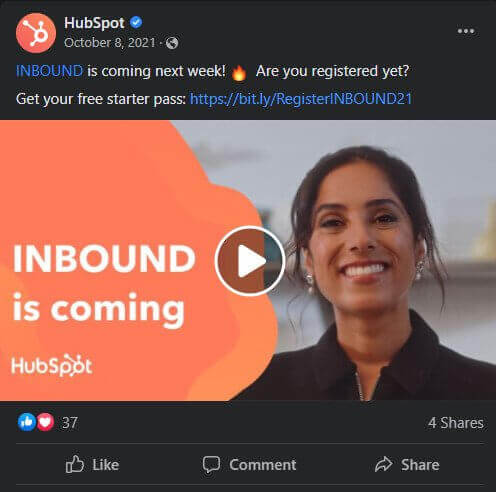
Notice the CTA “Get your free starter pass.” That’s about as straightforward as it gets!
2. Give them a reason
As with most things in life, every action or decision that we make has a reason behind it. It’s basic psychology.
When you ask your audience to sign up for your webinar, the one thing they’re going to ask themselves before they click on that button is this: “What’s in it for me?”
In other words, your CTA should express how you can solve their problem. After reading your tweet or viewing your Instagram Story, they want a solution to their problem. They want to take action. And you must give them a clear reason why they should take that action.
To nail this part, make sure you have a deep understanding of what matters to your ideal customer (creating a buyer persona will help). And you need to communicate clearly (see the first tip) how your product or service can address those needs.
Check out this example by Aya Paper Co. The brand’s CTA in its Instagram bio (“Join our newsletter for 15% off!) gives its audience a good reason to sign up.
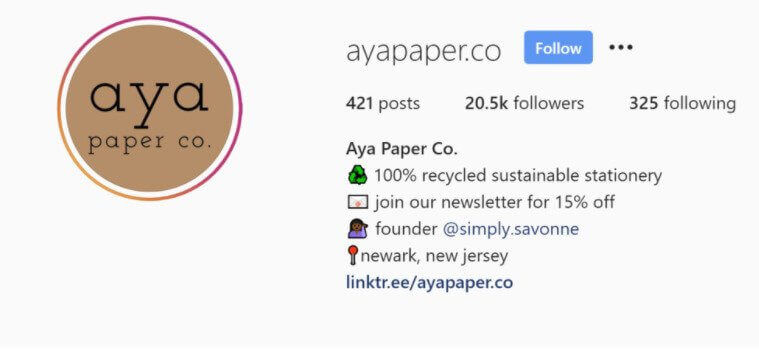
3. Make them feel something
Yes, giving customers a good reason to do what you want them to do can compel them to click on that CTA button or link, but only up to a certain point.
Cold, hard logic doesn’t always work. To get them to take the next step, make them feel something. Hit them right in the feels.
The legendary Seth Godin says it best:, “By a factor of three, what you do is not nearly as important as how it makes people feel.”
Did you know 95% of purchasing decisions are based on emotions and are unconscious? Put another way, people buy with their emotions and justify their purchases with facts.
I’ll be the first to admit. Making people feel something is hard.
Here’s a tip for creating a CTA that pushes their emotional buttons:
Make sure your social media post (or video) is working hard as well. You can pull this off by using storytelling to your advantage.
Don’t just address their wants and needs. Make them visualize those wants and needs in their mind’s eye.
Create social media content that makes them feel they’re the hero of their own story, and then position your brand as the solution that will help them achieve the happy ending they seek.
Be the Yoda to their Luke Skywalker, in other words.
Once you’ve captured their emotions with your story-driven copy, use emotional trigger words to give them the final nudge they need to get them to click on that button or link.
Acadium Official is one brand that does this really well.
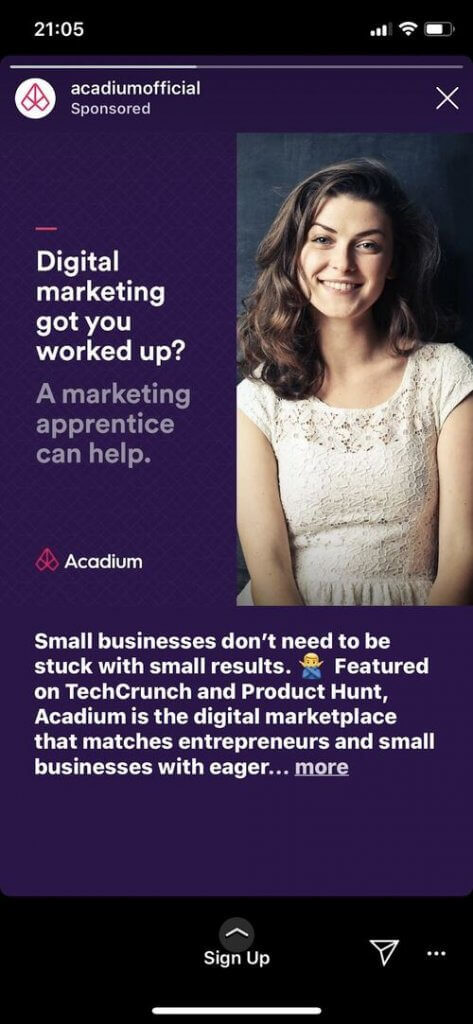
As you can see, the Story appeals to emotions by getting into the heart of the matter. I mean, who isn’t worked up by digital marketing?
4. Create a sense of urgency or FOMO
Want to know why The Squid Game was a phenomenal success?
I suppose you can say it’s because it’s a bloody good show. But that’s not the main reason it posted a staggering 1.65 billion hours of streaming in 28 days following its September release.
People watched it because they have FOMO (short for “fear of missing out”). You may also call it loss aversion, a cognitive bias where the pain of losing is psychologically twice as powerful as the pleasure of gaining. Put another way, from a customer’s perspective, it’s better not to lose $50 than to find $50.
Netflix is the master of triggering FOMO among its audience. They’ve marketed the show in a way that makes you feel like a cultural outcast if you don’t watch the show.
CTAs work the same way. Create a sense of urgency with your CTA and you’re more likely to get your audience to do what you want. Add a sense of exclusivity into the mix and you’ll make it even more difficult for them to resist.
Putting a time limit or limiting the number of available spots is a great way to trigger FOMO in your offers.
Here are some examples:
- “Sign up today! Sale ends on Wednesday”
- “This is a limited-time offer. Get it while it lasts.”
- “Grab your spot while they’re still available!”
And here’s another, courtesy of Content Hacker founder Julia McCoy.
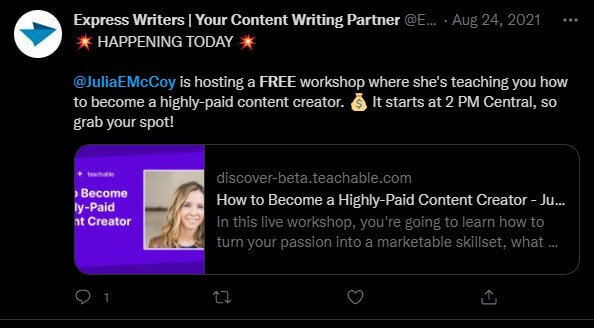
In addition, make sure that the scarcity angle of your CTA makes sense. Entering into manipulation territory smacks of desperation, and is the fastest way to lose your audience’s trust.
5. Keep it human
Didn’t I say that you’re on social media to build relationships?
Let’s face it. People are not on social media to be sold to.
Do you want them to give a damn about your brand, and by extension your products and services? Then keep it human.
If you want them to be comfortable enough to check out what you have to offer, don’t talk to them like you’re a car salesman desperate to earn a commission.
So, how do you keep your CTA human?
Here are a few tips:
- Showcase your values. To make them care about your brand, wear your heart on your sleeve. Make your values shine through. After all, people will support brands whose values reflect their own. It also communicates that you care, and have aspirations other than to sell and make money.
- Talk to your audience, not at them. You have to engage your audience on a human level to get them to trust you. So talk with them. And use “you” a lot. And tell them you’re always interested in what they have to say.
Lyft takes conversational marketing to the next level via this Instagram post. The caption below makes you feel like you’re talking to a friend who cares.
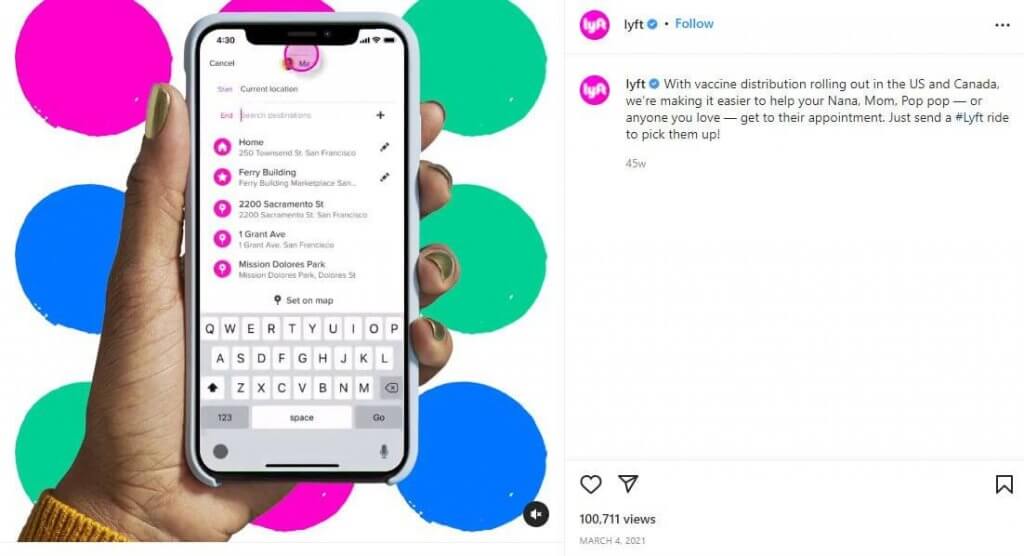
Little-known hack to create powerful CTAs: Save time managing your social media accounts
Knowing how to craft persuasive CTAs is one thing, actually doing them is another.
There are many things beyond CTAs that go into creating social media content that converts. Your CTA might be perfect, but if the other elements that accompany it are weak, then you’re going to get a pittance amount of conversions.
Is your accompanying image relevant to your offer? Is your Instagram caption communicating clearly why your audience should care about your brand? Have you taken audience intent into account?
The point is you already have a lot on your plate. To get the leverage and the mental reserves needed to craft CTAs that convert, put your social media management on auto-pilot.
NapoleonCat’s Publisher feature helps you pull this off by letting you:
- Schedule social media posts for automatic publication across Instagram, Facebook, TikTok, Google, and LinkedIn.
- Create a shared publication calendar for multiple social media accounts for a bird’s eye view of your social strategy
- Manage social media publications from desktop
- Work in a team, exchange feedback, ideas, and tasks – all inside one tool.
NapoleonCat’s Publisher also creates a friendly environment that takes advantage of each platform’s unique features. This allows you to tailor your CTA for each platform, allowing you to maximize their impact and yield better results.
We recommend you test NapoleonCat completely for free here – no credit card required during signup 😉

Simplify Social Media
Management with One Tool
- Manage & reply to comments and DMs in one place.
- Monitor ad comments from multiple accounts.
- Automate answers to repetitive questions.
- Schedule posts to multiple accounts, on desktop.
- Analyze performance and monitor hashtags.
- Keep track of your competition.
- Create or schedule in-depth reports in seconds.
Wrapping up
I hope this article has helped you understand the importance of creating persuasive CTAs and sparked some ideas on how to create CTAs that will move the needle for your social media campaign.
Remember, CTAs aren’t only about telling what you want your prospects to do. It’s also an excellent way to connect with customers who want a clear direction on how you can improve their lives for the better.
Social media is about building relationships, remember?


